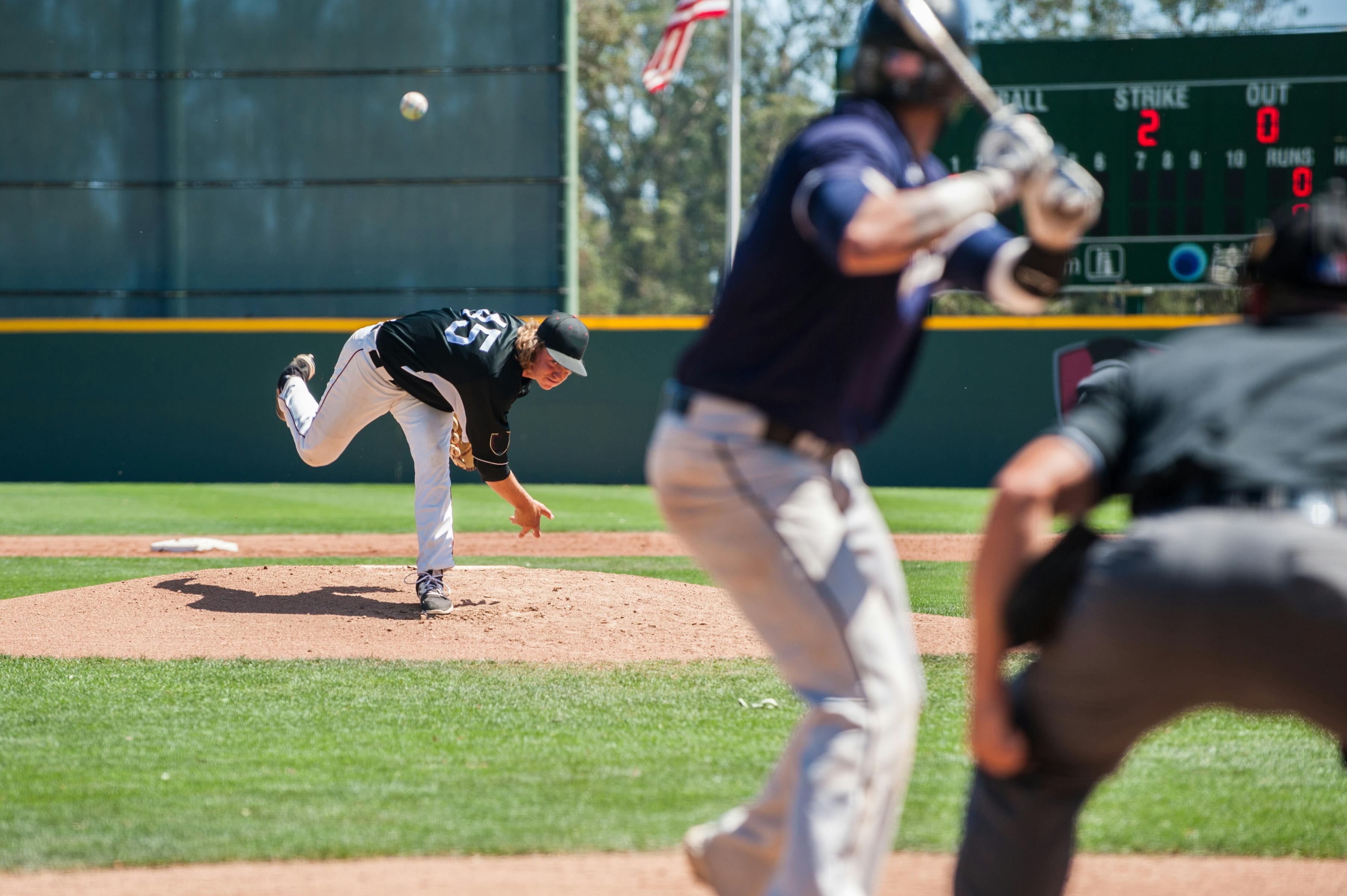Live from Miller Park in Milwaukee, watch the Brewers take on the Kansas City Royals Friday, September 18 at 8 PM ET, 5 PM PT


5 Tips For Crushing A Curveball
How To Hit A Curveball
There goes the old saying that when life throws you a curveball, hit it out of the park. However, as easy as that sounds, hitting a curveball is one of the toughest tasks that every batter will face over the course of the game. The movement on a curveball differs from pitcher to pitcher. The way the pitcher grips the ball, and their delivery of the pitch has an effect on the trajectory, and the aerodynamics on the way to the plate. The 12-to-6 curve is one of the most common curveballs fans are familiar with, which references the vertical movement from starting high and ending low. Another breaking pitch is the 11-to-5 curve, which entails more horizontal movement but not as much as vertical. There are also curveballs called “slurvy” curves, or sliders, that do not have much vertical movement, but have a strong amount of horizontal movement. One of the hottest pitchers right now who throws a nasty 12-to-6 curve is Arizona Diamondbacks pitcher Zach Greinke, who has completely left batters stone cold and motionless at the plate. One memorable at bat came against White Sox second-baseman Yomer Sanchez, where he threw his 65mph eephus curveball, which is defined as a very low-speed junk ball. The end result was Sanchez completing his swing before the pitch even got there. Click here to watch to admire this devastating and demoralizing pitch.
Do you want to become the next person who looks as lost as Yomer Sanchez at the plate against someone who has an outstanding curveball? I doubt anyone wants to look like a fool at the plate and this is why I have produced my top 5 steps of hitting a curveball.
1. Study the pitcher: While he is throwing in-game, or in the bullpen, analyze the pitcher’s movements in his windup. See if the pitcher changes up his release points depending on the pitch he is throwing. It is essential to find out if there are any potential tells in his windup of when he will throw a curveball. For example, a twitch in the glove or an adjustment in the windup. Every advantage will count because batters have under a second to determine the pitch, whether the pitch is a ball or strike, and the speed of the pitch. Watch the pitchers arm and observe whether or not it snaps downward, this is an indication a curveball.
2. Recognize the pitch early: As mentioned before there are various trajectories with a curveball that have the ability to throw off batters and lead to an off balanced swing. Curveballs with a lot of topspin will create high pressure on the top of the ball, which leads to a downward and sinking trajectory for the ball. Knowing how strong the topspin is will help you identify if the pitch is a 12-6 curveball versus a slider. Read the ball out of the pitcher’s hand, and never anticipate a curveball will be thrown. It is much harder to think curveball, and react to a fastball. There simply isn’t enough time to change your approach mid-pitch when the pitcher is throwing heat. When a curveball is thrown, the spin creates a small red dot from the laces, which indicates a breaking pitch. Pick up on this early, and react to the movement.

3. Analyze previous at-bats: Were you out in front and completely whiffed in your first at bat against a curveball. Think about the type of stance and approach you came up to the plate. The best stance that I recommend is having your feet shoulder apart and keeping your hands and body back. Make sure your weight stays at least 70% back. The most common mistake batter make when hitting a curveball is having your weight out front, anticipating an off-speed pitch. Keep your weight back, and react to the ball as it leaves the pitcher’s hand.
4. Practice and Utilize Multiple Curveball Drills: One of the best drills for a batter is the underhand recognition drills, which requires having a partner 15 feet behind a screen tossing you pitches underhand. This partner will constantly mix up the speeds and locations of these pitches in order to help the batter get used to the hesitation that is typical of batters when they face breaking pitches. You can also find baseball coaching drills focused on hitting by great coaches such as hall of famer Tony Gywnn.
5. Enhance patience at the plate with lobs: Similar to the underhand recognition drill, have someone behind a screen, but instead have them throw just lobs over the screen. This will allow you to build the mental strength to understand where the ball enters the hitting zone so that you can rocket the ball straight up the middle. It also allows you to stay inside the ball, meaning waiting longer on the pitch to get deeper in the zone for the batter to turn on it and go opposite field. You do not want to be out in front of the plate, because there will be minimal power behind the swing since the hips have already opened up and the bat is already in mid-swing when the pitch isn’t fully at the plate yet.
Sources:
Bahill, Terry. “Bahill's Science of Baseball Research.” Bahill's Science of Baseball Research, 11 Aug. 2011, sysengr.engr.arizona.edu/baseball/index.html.




No comments:
Post a Comment